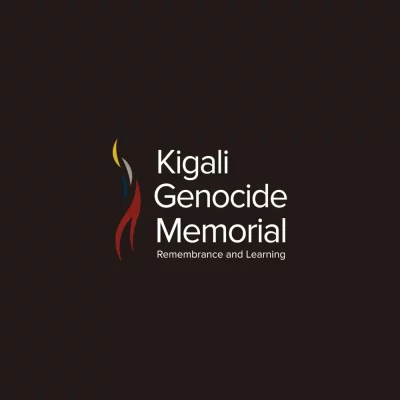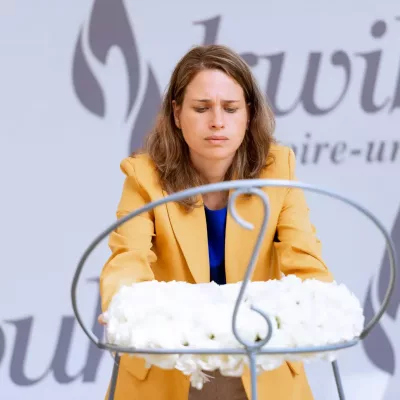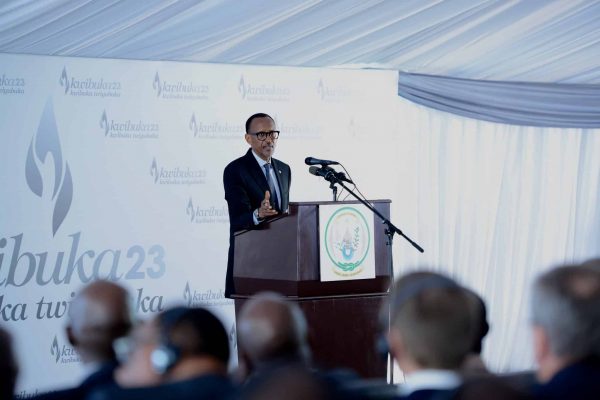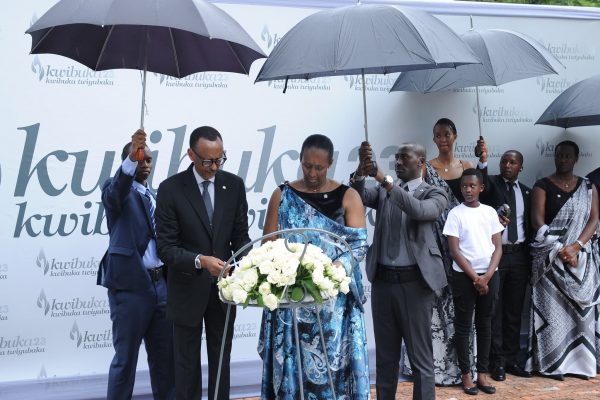In a series of its publications of key events that marked the preparation of the genocide against Tutsi, CNLG brings you notable activities that characterized the second week of the years 1991, 1992, 1993 and 1994.
Establishment of the INTERAHAMWE Newspaper
In January 1992, a newspaper called INTERAHAMWE was established which was affiliated to the MRND political party headed by Robert KAJUGA a leader of Interahamwe militia at national level. This newspaper together with others such as Kangura, Kamarampaka, La Médaille Nyiramacibiri, Echos des Mille Collines, Umurwanashyaka, RTLM , etc. is among the media that fanned hate propaganda and the incitement to commit genocide.
13 January 1993: documents targeting Butare Prefet Dr HABYARIMANA Jean Baptist were circulated
Dr HABYARIMANA Jean Baptist was appointed Prefet on 3 July 1993. He was the sole Tutsi Prefet among the 11 who headed the prefectures. He belonged to Parti liberal (PL) political party. Since he took the responsibilities, he was heavily targeted for being a Tutsi and for his being against the MRND and CDR extremists that propagated hostile genocide ideology in Butare town. Notable of these extremists include Capt. Nizeyimana Ildefonse, Alphonse Higaniro the General Manager of SORWAL matchbox factory, Ndereyehe Charles Ntahontuye former Director of ISAR, Dr Jean Berchmas Nshimyumuremyi Vice Rector of the National University of Rwanda, Dr Eugène Rwamucyo, and others. This clique together with others worked hard to sabotage Dr HABYARIMANA Jean Baptist by employing various methods including frequently sending him malicious letters meant to castigate him. One of those letters was written on 13 January 1993 by 10 senior employees of Butare and Nyanza towns including three Sous-Prefets that were under Prefet Habyarimana.
The letter was titled: ‘Scathing letter directed to Mr HABYARIMANA Jean Baptist Prefet of Butare Prefecture.’
Among the accusations against Prefet HABYARIMANA included urging citizens to collaborate with Inkotanyi. “You yourself Hon Prefet, in a meeting you held with citizens of Nyaruhengeri Commune when you went to introduce yourself, in response to a question you were asked concerning young people joining Inkotanyi, you said that those people have no problem and nobody should prevent them because if it was a problem the government would not have gone into peace talks with the Inkotanyi.” The letter said in part.
The fact that HABYARIMANA urged citizens not to treat Inkotanyi as aliens and anti-Rwanda but welcome them as fellow Rwandans and accord them all the rights a human being deserves wasn’t a crime. All sane leaders ought to have done the same. His being targeted for seeking to treat all humans equal was part of the plan of genocide.
The second accusation was tribalism where they alleged him of dismissing Hutu employees. This is how it read: “after being apportioned Butare Prefecture, every Hutu had his/her position changed and these were replaced by unexperienced Tutsis from different areas, even with less qualifications than those they replaced.” They ended their letter with the following words: “It’s our hope Mr Prefet, that going forward, given the proficiency and acumen citizens expected from you, either you change the discourse or declare publically that you have failed.”
Such threats were issued by people who were close to Prefet HABYARIMANA, instead of jointly working together to fulfil their duties. All this was contained in the grand scheme of genocide planning.
Authors of the letter are the following:
1) Nyilinkwaya Zephanie, sous-prefet
2) Halindintwali Céléstin, inspector of bridges and causeway
3) Mutabaruka Bernard, inspector of bridges and roads
4) Ndahayo Naphtal, Head of communication services in Butare;
5) Muyamagana Wilson, Director of CPDFP in Butare;
6) Uwimana Aloys, Head of youth and cooperatives in Butare;
7) Habumugisha Michel, sous-prefet of Nyabisindu Sous-Prefecture;
8) Ngiruwonsanga Vincent, bourgmestre of Nyabisindu Comune;
9) Simbalikure Assiel, sous-prefet of Busoro Prefecture;
10) Harelimana Rostal, whose position was not mentioned.
ISIBO newspaper No 83 of 9-16 January 1993 by Sixbert Musangamfura which is known to have been hostile to Tutsi people, wrote that the authors of this letter wanted to have as many signatories but those they approached objected. ISIBO also reiterates that those who signed the letter were members of MRND//CDR political party apart from NYILINKWAYA Zefaniya who was member of PSD which later declared to have dissociated from him. Isibo goes on to explain that the reason behind the animosity against Prefet Habyarimana was his stance against corruption, divisionism and other forms of injustice that were being committed by those employees. Instead of changing their attitude, they decided to throw him into the mud, alleging him of the crimes they were committing instead. Briefly, the ISIBO newspaper showed faults of each among those who signed the letter, indicating that the intention of the letter was to sow confusion and conflict in a commune that was generally peaceful. It called for these people to be closely monitored so that they don’t spread their harmful propaganda to other employees. It applauded the PSD party for distancing themselves from NYILINKWAYA saying that his political views are not aligned with those of the party.
14 January 1993: MRND calls for apportioning a position in the Government to extremist political parties
In the communiqué issued by MRND Secretariat with a title: “MRND Bemusement about Arusha Peace Talks”, it said that MRND will fight the peace agreement so long as the Hutu extremists have not been given a position in the government. “If these peace talks are meant to unite Rwandans, Inkotanyi should accept CDR. That they call CDR an enemy, they should accept PECO, PADER and PARERWA since they consider these to be allies of the enemy MRND. (…) those who were displaced have been forgotten by NGULINZIRA. What’s the essence of such accord that does not take into account the vulnerable at his hometown of Butaro? ”
15 January 1993: MRND General Secretariat issued another communique titled: “The Betrayal in Arusha Peace Accord.” In that communique, MRND voiced their displeasure toward Minister NGULINZIRA saying that his only motive is to hand over Rwanda into the hands of Inkotanyi. That he will not relent until the entire nation falls into the hands of Inkotanyi. “After the emerging of political parties, he felt his promises to Inkotanyi are going to fail. He and Minister NSENGIYAREMYE started sharing ministries. The ministry of Local Government has been awarded to Inkotanyi! After giving it away, he was relieved saying: “now that this is given, my job is done.” That was not part of his job though: it’s fraud. (….) comrades, we must renounce this fraudulence. Minister NGULINZIRA has sold our country. NGULINZIRA never went to look for peace but to make impetus for a new war. Why does he want to kill Rwandans?”
NGULINZIRA had become victim for his refusal to segregate Rwandans along ethnic or regional lines as it was the political ideology of MRND. Reason why they always said he doesn’t consider his people from Butaro where he hailed because he pursued the path of peace for all Rwandans. His recognition of Inkotanyi as fellow Rwandans who deserve their rights as any other Rwandan attracted wrath from those who were opposed to the idea. This hatred toward him by MRND top brass increased over time even up to the President of the Republic HABYARIMANA Juvenal.
15 January 1993: MRND leadership in Butare Prefecture wrote to Prefet HABYARIMANA a letter smearing him with false accusations. The letter was widely circulated in newspapers as well. The title of the letter was: “Our Concern for your Actions.” It was signed by Dr BUTARE Innocent claiming to have written it on behalf of the President of MRND party in the Prefecture, Mr RUGIRA Amandin. In the letter, BUTARE Innocent cautioned Prefet HABYARIMANA alleging that in his decisions, he is influenced by PL party members in Butare prefecture including Dr MUNYESHULI Vincent, NIYONIZEYE Gaetan, KURAWIGE John Batist and NKULIKIYINKA Deo. The letter doesn’t divulge the reason that could bar préfet HABYARIMANA from talking to the mentioned individuals which shows that its real intent was to prevent HABYARIMANA from talking to his fellow party members yet the law regulating political parties wasn’t against it.
Another unfounded allegation BUTARE Innocent raised against Prefet HABYARIMANA was regarding transfer of Criminal Investigation Inspectors (IPJ) in Communes such as Shyanda, Mbazi, Huye, Ngoma, Ndora, and Gashamvu. He claims that all were from PL party yet that was impossible. Appointing these Inspectors and transferring them was not in his mandate as préfet. They were affiliated to the Ministry of Justice which was the appointing authority with the mandate of transferring them.
BUTARE’s letter concludes saying that those allegations against the Prefet indicate that his objective was to destroy MRND and its members, adding that he won’t achieve his goal. In fact, the purpose of the letter clearly indicates that he wanted to portray the Prefet as someone who was against people who don’t hail from Butare and he was against MRND. This served to rally all people working in Butare but not born from Butare to stand up and fight the Prefet and his PL party. He calls for unity among Hutu Power members, a tactic used to support the divisive politics by MRND/CDR by installing in top positions members from these political parties who hail from Ruhengeri and Gisenyi. This confirms what was written by ISIBO newspaper as it was earlier explained.
15 January 2993: MDR demonstrates that Col Bagosora is leading massacres
A communique by MDR of 15 January 1993 says that Col BAGOSORA was at the helm of the acts of killing committed by Interahamwe militia. This is stated in the following words: “Kigali dwellers have also realized that there’s a resurgence of bandits. In fact, it’s the Interahamwe and the Bagosora’s and Col NSENGIYUMVA CDRs without forgetting Col SAGATWA and Major NKUNDIYE who heads the Presidential guards. After realizing that the national army mainly the commanders of gendarmerie are adhering to the principal of keeping security, Col BAGOSORA has begun to find ways these commanders can be redeployed and others killed in order to give room for those who share the same ideology with those in Akazu. (…) in fact, what’s happening today including the rise in criminality is a long term plan by BAGOSORA and the others in Akazu which is headed by the President Gen HABYARIMANA in order to instill fear and cause war in the country as a way of jeopardizing the peace agreement, deposing the current government and plunging the country into a crisis. Col BAGOSORA expect the plan to be realized through a coup game, whereby the President, his family and with his wealth will flee to exile, BAGOSORA and his colleagues then will start targeting those they call the collaborators and traitors (meaning political parties opposing MRND). They also plan to exterminate all officers that are not part of Akazu after that,, BAGOSORA will seat on the helm, with Major Nkundiye next to him. That plan must have been concluded before April this year. However, it’s clear that such a plan isn’t beneficial to our country aprt from sinking our country like Somalia because the current turmoil can’t be solved by a military coup as it has been reported that they have already started secretly sneaking ammunitions into the country to be used.”
19 January 1993: Killings of Tutsi in various parts of the country
On 10 January 1993, in Arusha Tanzania, peace talks between RPF-Inkotanyi and the Government of Rwanda were taking place, where they appended signatures on power sharing agreement. MRND party mobilized its members countrywide to carry out demonstrations denouncing the provisions of the agreement, which was an indication that MRND was against the peace accord, instead it pursued killings as a solution to the political problem.
Demonstrations spread across all major towns with many criminal acts targeting Tutsis and Hutus who were opposed to MRND. The demonstrations were followed by killings of Tutsis in various parts of the country especially in Ruhengeri, Gisenyi, Byumba in Tumba Commune, Kinuye in Rutsiro Commune, and Kigali Ngali in Bumbogo and Buliza. This killing of Tutsis in various places was used by the Habyarimana regime as a sign of how the Genocide was prepared and implemented. These acts of violence and genocide planning were denounced by the local Human Rights Organizations including PRO-FEMMES Twese Hamwe, CLADHO and CCOAIB.12 January 1994: Report by French Ambassador to Rwanda says Rwanda is planning a genocide against Tutsis in which more than 1000 people woul be killed in the first hour.
The French Ambassador to Rwanda Jean Michel Marlaud wrote a telegram to the French Minister of Foreign Affairs explaining the atmosphere in Rwanda. Ambassador Marlaud explained that he received some reliable information with tangible evidence that there’s a plan of killing Tutsis in the country. Ambassador Marlaud said that the plan will be preceded by provoking RPA forces stationed in Kigali so that as they try to defend themselves, this will be a pretext to kill Tutsis beginning with those in Kigali. The Ambassador adds that the national army organised the plan and more than 1700 Interahamwe in Kigali city have been provided with training and weapons to kill Tutsis, and have capacity to kill around 1,000 people in the first hour of the killings.
16 January 1994: Meeting of Hutu Power political parties in Kigali City called for cautiousness towards Tutsis and Belgians
On 16 January 1994, a meeting was held bringing together a big number of people from all parts of the city and suburbs, who were members of Hutu Power. It took place at Regional Stadium in Nyamirambo. In the meeting, Justin Mugenzi who was the head of Hutu Power faction in PL party took on to stage and urged people to exercise cautiousness towards Tutsis and Belgians from UNAMIR. In the same meeting, weapons were distributed to all Power members from political parties including MRND, CDR, PSD, PDC and PL. Such distribution of weapons had also been confirmed on 15 January 1994 by the Belgian ambassador in his letter to the Foreign Affairs Minister of his country, informing him of the continued distribution of weapons to Interahamwe, pleading that UNAMIR should be given mandate to intervene and halt the distribution.
It’s the same that Gen Dallaire who headed the UN Mission in Rwanda had written to the UN Security Council on 11 January 1994 requesting for authority to confiscate the weapons, but Koffi Annan who was in charge of Peace Keeping Operations did not heed to the demands.
Conclusion:
The Genocide against the Tutsi was planned. We shall continue to bring you key events that remind this tragic history that our country was sunk into by bad leadership. Let’s continue to remember the history as we strive to build a new Rwanda that’s free from Genocide ideology.
Dr BIZIMANA Jean Damascene
Executive Secretary








